The foundation really comes down to the leadership, the people who are in control. Because what DEI is about is shifting systems of power. — Mariah Driver
Want to know what actionable steps you can take to create a more inclusive hiring process at your organization? You’ve come to the right place.
We invited two diversity, equity, and inclusion subject experts to share tactics from their DEI playbooks in a conversation with Arc’s Lauren Peikert:
- Webflow’s Head of Diversity, Equity, and Inclusion, Mariah Driver
- Help Scout’s Director of Talent Acquisition, Leah Knobler
Mariah and Leah both built their organizations’ DEI strategies from the ground up, with measurable results (an example: Leah grew the Help Scout engineering team from 5% to 37% women!). Fortunately for us, they were happy to share some of the details.
Watch the full talk below, or read on for some of the key take-home information!
Looking for top talent fast? See how Arc can help you:
⚡️ Find developers, designers, marketers, and more
⚡️ Freelance or full-time remote + fully vetted
⚡️ Save up to 80% with global hires
Hire top talent with Arc risk-free →
What Is DEI And Why Is It Important?
If you’re still not quite sure what “diversity, equity, and inclusion” means, click here for a quick refresher.
As Mariah pointed out, some people confuse DEI with being a PR strategy — but it’s not:
It’s a strategic lens of how you view your entire organization. So the processes, the practices, the policies, across every department and across every team. So it really should be a horizontal function.
As to why you need a DEI strategy for your organization, not only does it make good business sense, as Leah put it: “It should be beyond business case at this point.” Mariah agreed, noting:
At the core of why DEI matters, it’s really because people matter… all of your employees feeling a high sense of belonging and empowerment and inclusion is important because your people working for you should matter. And beyond that, your customers matter. So if you’re building a diverse team that represents a diverse set of identities and experiences and abilities… you’re setting yourself up to build a product that services more people across those differences.
Commit To Having A DEI Strategy
DEI strategies aren’t set-and-forget. Authentic commitment to change is required from leadership — not just a fear of looking bad, or other social imperatives. According to Mariah, successful inclusive leadership traits include:
- Curiosity (driving change by figuring out what we don’t know and who we’re not serving)
- Courage (being comfortable with not knowing things and engaging with discomfort, and focus on serving people rather than pleasing them)
- Commitment (being genuinely committed to the success of your team, and taking actions to make it happen)
On top of the right direction from leadership, DEI is everybody’s responsibility. According to Leah, one of the dangers of placing one team member in charge of DEI is diffusing responsibility, and making other team members think they don’t have to do the hard work themselves. For this reason, Help Scout doesn’t have a single person in charge of their DEI initiatives.
Hiring For A Diverse, Equitable, And Inclusive Workforce
So you’ve decided to implement some DEI-based improvements for your organization’s hiring process. Great! But… where do you start?
Survey To Find Your DEI Gaps
The first step is knowing what needs changing. In practice, this means that you need to find out your company’s current baseline. As Leah put it:
You have to survey to know who’s here. So then you can inform your hiring practices and, and figure out who you need to be recruiting and targeting.
Fortunately, there are plenty of pre-made DEI survey questions on the internet (including pre-made survey forms!) that you can use.
Once you know what needs changing to create a more inclusive workplace, you need to make people responsible for making the changes. At Webflow, according to Mariah, their People Ops team is “in charge of integrating a lot of this work into their existing processes… and making sure that they’re measuring the metrics.”
Things measured by the Webflow team include promotions, how raises are determined amongst different demographic groups, and more. By establishing metrics up-front, the team is — in Mariah’s words — able to “hold ourselves accountable for shrinking those margins over time.”
Embrace Trade-Offs
Mariah noted that change is uncomfortable — and leaders need to proactively knowledge this to have a chance at success:
You might lose people who are not onboard with your DEI efforts and the imperative of your company. You might have to sacrifice time to hire. You might have to slow down the hiring process to mitigate bias. So all of these things. Get clear about your willingness and readiness to make those trade offs and make those investments.
If you’re serious about fixing your hiring process to make it more inclusive, you need to embrace these trade-offs.
Write Job Descriptions Using Inclusive Language
Job descriptions often combine a number of different criteria, including must-haves and nice-to-haves.
It’s up to you to distinguish between these when you are creating the software engineer job description, and to understand that criteria will limit the diversity of candidates who apply. (For an interesting discussion on how the language used to describe qualifications and responsibilities can affect applicants, click here.)
Then you need to do the work to ensure that underrepresented talent is brought in the door.
As Mariah said, something Webflow is doing is:
Making sure our sourcing team is really focusing on attracting and reaching out to underrepresented talent and making sure that we are being really clear in our job descriptions about the necessary requirements, and then leaving out any nice to have requirements because ultimately a lot of those can be learned on the job.
She also noted that the Webflow team has been taking “years of experience” requirements out of job descriptions, and instead “focusing on what has the person been able to do in the past.”
Another thing: keep in mind that limiting jobs to a certain location, like a tech hub, creates entry barriers. Mariah pointed out that people need to have a certain level of socioeconomic status to be able to live in these places. This naturally limits the diversity of your candidate pool. (Embracing remote work is one way to reduce this barrier.)
Fix Your Interview Process
Ensure You Interview a Diverse Candidate Pool
Assuming you’ve now got a diverse pool of candidates, the next step is to ensure that you interview them. (Spoiler alert, we know.) As Mariah told us:
At the end of the day, you have a 0% chance of hiring someone from an underrepresented background if you don’t interview them.
What this translates to in practice: also having a diverse final candidate pool.
Understand Your Own Hiring Process Bias
When it comes to assessing candidates, you need to confront the fact that you have bias, and that this can be conscious bias as well as unconscious bias.
Leah told us that, yes, everybody has bias. If you need a refresher on what it is, she said that:
Bias is basically a particular tendency or feeling or opinion you might have, and often there’s not really any evidence or real obvious rationale for why you hold it. You just kind of do. And then unconscious bias is our underlying attitudes and stereotypes that we so consciously attributed to other people, and it impacts how we interact with them.
So if we all have bias, what do we do about it? As Mariah pointed out, bias has real consequences for hiring outcomes, and therefore affects people’s lives.
It’s important for the organization to take responsibility for creating systems and processes for mitigating that bias. But it’s also important for individuals to recognize that when you’re moving quickly, when you are forced to make a decision with limited information, those are the times when your unconscious bias actually starts to express itself.
The result of this on the hiring process can be profound. Not only does bias reduce your ability to make objective decisions about candidates,
It actually impacts our ability to make effective hiring decisions about who’s the best person for the job because we’re including information that’s irrelevant to someone’s ability to actually succeed and contribute to the team.
So what should you do about it?
Leah told us that “a huge way to mitigate bias is just to acknowledge it, just to talk about it.” Respectfully calling out bias when you spot it goes a long way. For details on Help Scout’s anti-bias hiring playbook, check out Leah’s great blog post here.
Use Standardized Interview Questions
Instead of going down the rabbit hole of individualized questions with a candidate, ask yourself whether you’re looking to hire a friend, or a person for a job. (Yes, it’s the latter).
Mariah broke it down for us:
The goal is not to get to know the person. The goal is not to make a new friend… It’s really to figure out is this person going to be successful in this role? Do they have the competencies to set them up for success?
To help eliminate bias, according to Leah and Mariah, you also need to be asking the candidates the same questions. This will help you to objectively compare and contrast your candidates. Ask yourself: what does a good answer to this question look like?
Also ensure that these questions are structured to give candidates a chance to demonstrate something they’re actually done in their past. This might help you understand how they can successfully fit into your team!
Leah also recommends using a hiring tool that prevents the hiring team from seeing others’ feedback before entering their own. As she puts it:
We all know humans are really impressionable. We’re easily swayed by our peers. It just happens.
The main thing: minimizing this influence so you can make great hiring decisions!
Get Feedback On Your Hiring Process
The reality of change is that it doesn’t always go smoothly. You may not get everything right the first time. So getting feedback from candidates who went through your interview process is a great way to figure out next steps.
At Help Scout, the team treats candidates like customers. Leah told us that:
Every single person who reaches at least to our second step of our process gets sent the candidate experience survey. We want them to leave feeling that they were treated with respect and integrity and that even if they didn’t get a job with HelpScout, they’re going to go tell all their friends: ‘Hey, you should apply there.’
This candidate experience survey includes questions targeted at finding out if the candidate:
- Feels they were fairly assessed
- Feels they were treated with respect
- Would recommend someone else to apply for a role (scale of 1-10)
Measure Your DEI Results (And Consider Making Them Public)
Earlier in this post, we’ve already talked about doing an initial survey to establish a baseline for DEI performance. The flip side of this is: keep doing more surveys, and tracking your metrics. Continuous improvement is the name of the game!
At Help Scout, according to Leah, company leadership is responsible for KPIs around diversity retention and inclusion. Additionally, Help Scout do a twice-a-year demographic and inclusion survey (they use Culture Amp as their tool of choice):
It just gives you a chance to understand, okay, who is actually at our company, what are the different identities here? How are people actually feeling? Do people feel like they belong and have a voice? And that things are fair?
To keep themselves accountable, Help Scout is now making this data public on their DEI Dashboard.
Ensure Your Leadership Is Also Diverse
A final note from Mariah:
We want to make sure that we’re not just filling our, you know, individual contributor roles and junior roles with diverse talent, but we’re actually making sure that that is transcending throughout the ranks. Because representation and leadership also really matters in terms of how people perceive their ability to succeed at the company.
Maybe it’s time to start that DEI survey?
Resources Recommended By Leah and Mariah
Leah and Mariah curated the following DEI information sources that you can use for further education (these are non-affiliate links for information only):
DEI 101
Authentic Diversity by Michelle Silverthorn
The Person You Mean To Be: How Good People Fight Bias by Dolly Chugh
LinkedIn Post by Michelle Kim on what allyship means, and what is required
For True Diversity In Tech, The Status Quo Needs To Go by Michelle Y Bess on the Sprout Social Blog
Project Include
Hiring
The Better Allies Approach to Hiring
Mitigating Unconscious Bias at Help Scout by Leah Knobler on the Help Scout Blog
6 Steps to Recruiting Like a Human by Leah Knobler on the Help Scout Blog
Onboarding
A Detailed Guide To Remote Employee Onboarding by Rachel Baskerville on the Help Scout Blog
Management
How To Be An Inclusive Leader by Jennifer Brown
Further Books
Me And White Supremacy: Combat Racism, Change the World by Layla F. Saad
White Fragility: Why It’s So Hard For White People To Talk About Racism by Robin DiAngelo
How To Be An Antiracist by Ibram X. Kendi
Thanks to our guests for sharing their DEI tips and strategies. Do you have any more resources to recommend? Let us know in the comments.
You can also try Arc, your shortcut to the world’s best remote talent:
⚡️ Access 450,000 top developers, designers, and marketers
⚡️ Vetted and ready to interview
⚡️ Freelance or full-time


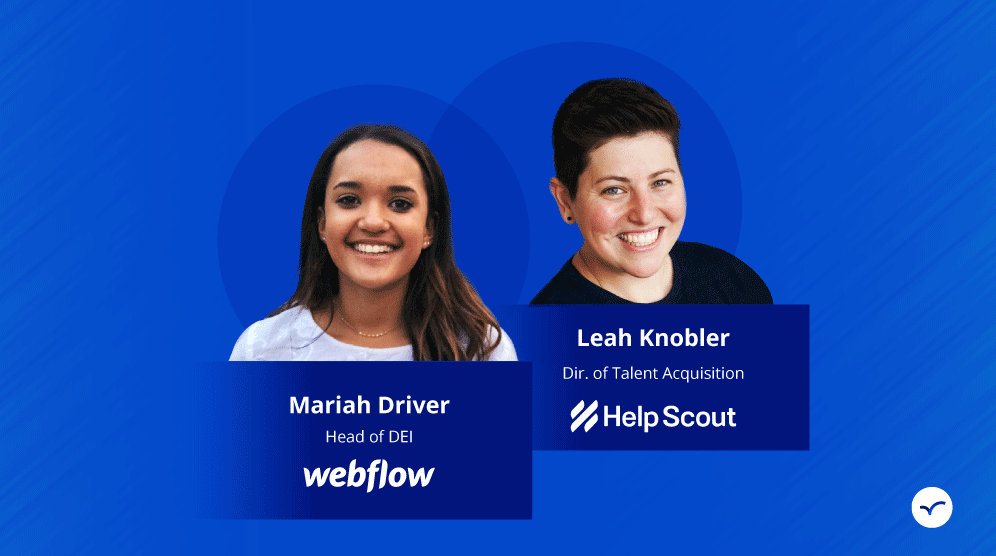
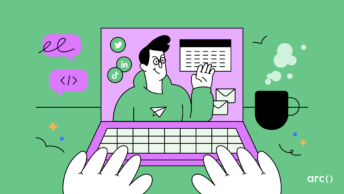
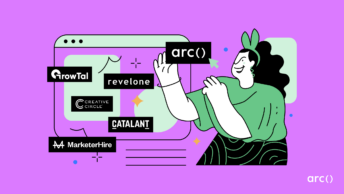
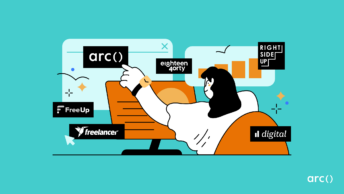
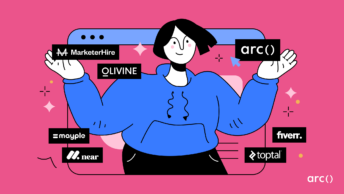
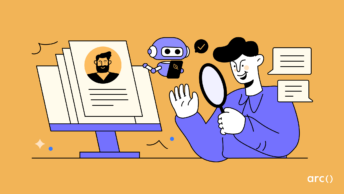
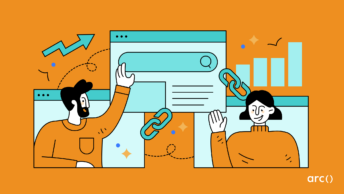
Very informative blog. It will help the employer to hire their employee by DEI method very easily.